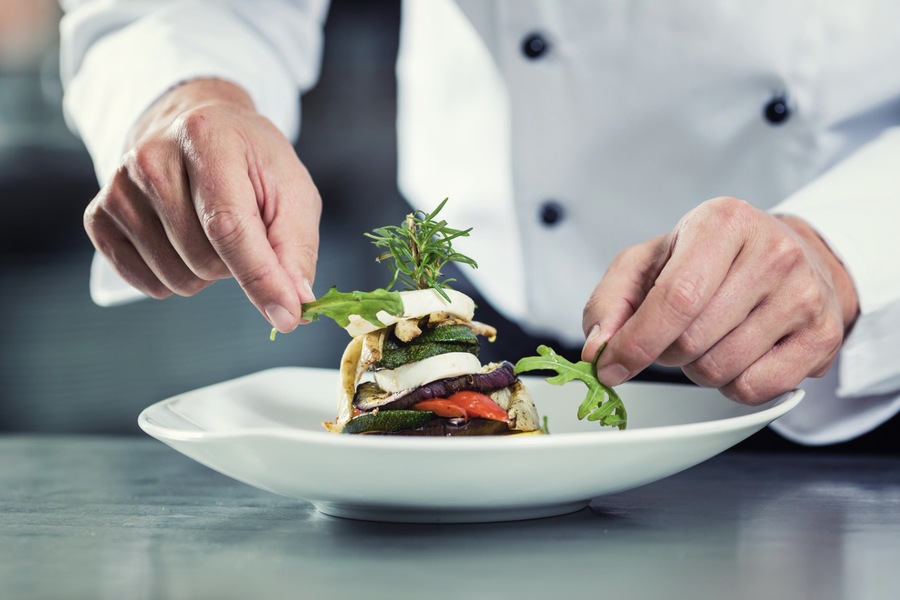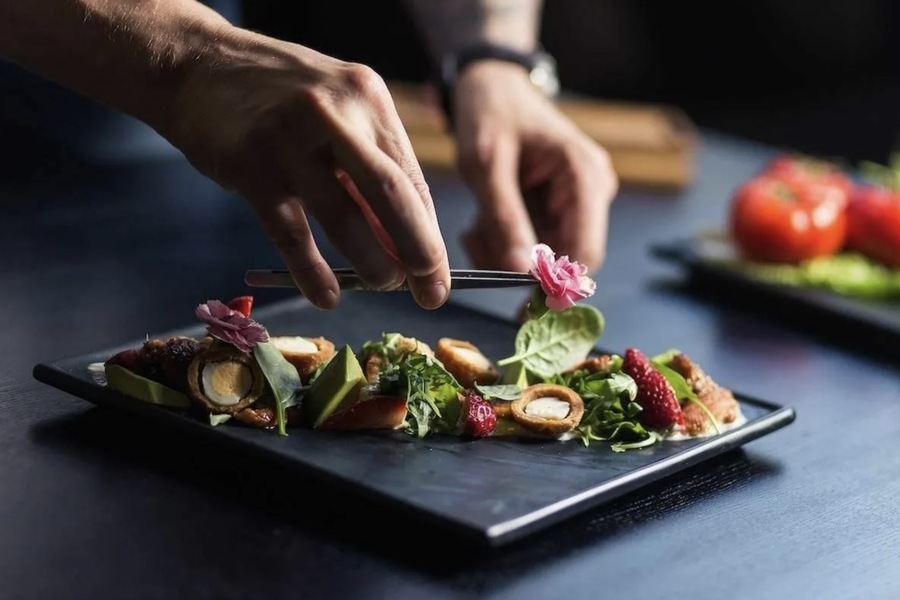The restaurant industry is among the most dynamic and adaptive sectors in the global economy, perpetually influenced by evolving technologies, societal shifts, and cultural movements. In 2024, restaurateurs are increasingly focused on embracing cutting-edge trends that not only meet but exceed consumer expectations. From conceptual rooftop bars that redefine urban leisure to eco-friendly food trucks bringing culinary creativity to the streets, the dining world is buzzing with innovation. Iconic destinations like rooftop bar gardens by the bay exemplify how establishments are blending stunning views with exceptional dining experiences, creating memorable moments for patrons. This article takes an in-depth look at the trends defining the modern restaurant industry, offering insights into how establishments can thrive in this competitive space.
Healthy Eating: A Cornerstone of Modern Dining
The health and wellness movement continues to dominate consumer preferences, reshaping menus across the globe. Today’s diners are not just looking to satisfy hunger—they are increasingly mindful of what they consume and how it impacts their bodies. Restaurants that prioritize fresh, unprocessed, and nutrient-rich ingredients are reaping the rewards of this shift.
Transparency has become a vital aspect of healthy dining. Menus now feature detailed nutritional breakdowns, including calorie counts, macronutrient balances, and potential allergens. This level of information fosters trust and attracts health-conscious patrons. Beyond transparency, functional foods such as kombucha, açai bowls, and adaptogenic lattes are becoming mainstream offerings.
Moreover, personalization is becoming a hallmark of healthy dining. Diners want meals tailored to specific dietary needs, such as gluten-free, keto, or paleo options. Restaurants that can cater to these preferences through customizable menus are gaining a competitive edge.
The Vegan Revolution: A Shift to Plant-Based Menus
The rise of veganism and plant-based diets is one of the most significant dietary shifts of the 21st century. More than ever, consumers are choosing meals free from animal products for health, ethical, and environmental reasons. Restaurants that embrace this trend are going beyond token salads to create imaginative, satisfying dishes that redefine plant-based dining.
Dishes like vegan sushi rolls made from jackfruit, cashew-based cheeses, and plant-based protein burgers are leading the charge. Additionally, advancements in food technology have introduced products like lab-grown meat and egg substitutes, offering chefs new opportunities to innovate. By incorporating diverse plant-based options, restaurants are not only catering to vegans but also attracting flexitarians—those who occasionally opt for meat-free meals.

Fusion Cuisine: Redefining the Global Palate
Fusion cuisine continues to be a playground for chefs looking to blend the familiar with the exotic. This culinary trend reflects a world that is increasingly interconnected, where diners seek bold, adventurous flavors.
The appeal of fusion dishes lies in their ability to surprise and delight. Think sushi burritos that marry Japanese techniques with Mexican flair, or pizzas topped with Thai curry spices. These creations offer diners the chance to experience multiple cultures in a single bite, often leading to unforgettable meals.
For restaurants, embracing fusion cuisine is not just about culinary creativity; it’s a way to stand out in a crowded market. By experimenting with cross-cultural flavors, chefs create buzz-worthy dishes that draw in curious food enthusiasts.
Sustainability: Restaurants Go Green
As environmental concerns grow, sustainability has become a critical consideration for diners and restaurateurs alike. Modern consumers are increasingly discerning about the origins of their food and the environmental impact of their dining choices.
- Local Sourcing: Restaurants are collaborating with local farmers and suppliers to source fresh, seasonal ingredients. This farm-to-table approach not only supports local economies but also reduces the carbon footprint associated with transportation.
- Zero-Waste Initiatives: Many establishments are adopting zero-waste policies, using creative techniques to minimize food waste. For example, vegetable scraps are repurposed into broths, and surplus ingredients are transformed into inventive daily specials.
- Eco-Friendly Packaging: Single-use plastics are being replaced with biodegradable or reusable materials, reflecting a commitment to reducing waste.
Consumers are drawn to restaurants that embrace these practices, viewing them as responsible and forward-thinking. Establishments that integrate sustainability into their branding often benefit from increased loyalty and positive word-of-mouth.
Authenticity and Local Cuisine: Celebrating Regional Flavors
When traveling, tourists increasingly seek authentic dining experiences that immerse them in the local culture. Regional restaurants specializing in traditional dishes are capitalizing on this demand by offering menus that highlight indigenous ingredients and cooking methods.
From Siberian stroganina to the bold spices of the Ural region, regional cuisines offer a unique sense of place. To enhance authenticity, many restaurants collaborate directly with local farmers and artisans, ensuring the highest quality ingredients while supporting the community.
Additionally, storytelling is becoming a key part of the dining experience. Menus often include anecdotes about the origins of dishes, connecting diners to the rich heritage of the cuisine.
Emotional Service: Creating Lasting Impressions
Dining is no longer just about food; it’s about the memories and emotions associated with the experience. Restaurants are going the extra mile to create atmospheres that captivate and engage their patrons.
- Unique Interiors: From whimsical, Instagrammable décor to minimalist designs inspired by nature, the ambiance of a restaurant plays a significant role in shaping the dining experience.
- Theatrical Presentations: Tableside flambé dishes, nitrogen-frozen desserts, and interactive plating are just a few ways restaurants are turning meals into performances.
- Staff Training: Exceptional service is at the heart of emotional dining. Staff members who are knowledgeable, personable, and attentive can elevate a meal from ordinary to extraordinary.
Innovative concepts such as gastro bars, which combine fine dining with entertainment like cooking classes or wine tastings, are becoming increasingly popular. These establishments offer a blend of culinary expertise and interactive fun, appealing to diners seeking unique experiences.

Delivery and Virtual Restaurants: The Convenience Factor
The rise of food delivery services has permanently transformed the restaurant industry. Virtual kitchens, also known as ghost kitchens, are designed exclusively for delivery and represent a growing segment of the market.
These establishments allow chefs to focus on creating high-quality meals without the overhead of a physical dining space. For customers, the convenience of ordering restaurant-quality food from the comfort of their homes is unmatched.
Delivery apps are also evolving, offering features like AI-driven recommendations and real-time order tracking to enhance the user experience.
Food Trucks: Mobility Meets Creativity
Food trucks continue to grow in popularity as a flexible and cost-effective dining option. These mobile kitchens offer a variety of cuisines, from gourmet burgers to artisanal gelato, often with a creative twist.
The mobility of food trucks allows them to serve customers at parks, festivals, and busy urban centers. For entrepreneurs, this model offers the opportunity to test new concepts without the financial risks of opening a traditional restaurant.
Automation and Self-Service: The Future of Dining
The integration of technology in restaurants is revolutionizing the way customers interact with establishments.
- Self-Service Kiosks: Allowing customers to place orders and pay independently reduces wait times and enhances convenience.
- Contactless Menus: QR code menus have become standard, enabling diners to browse, order, and even split the bill using their smartphones.
- Robotic Kitchens: Automation is extending to food preparation, with robots capable of handling tasks like flipping burgers, assembling pizzas, and brewing coffee.
While some fear these innovations may reduce the human element, many argue that they free up staff to focus on customer service, improving overall satisfaction.
Conclusion: The Future of Restaurants is Here
In 2024, the restaurant industry is embracing change at an unprecedented pace. From health-conscious menus to technological advancements, the trends shaping modern dining are as diverse as the cuisines they represent. Restaurants that can adapt to these innovations while staying true to their core values will not only survive but thrive.
As dining becomes a more personalized, sustainable, and experiential activity, one thing is clear: the global appetite for exceptional food and unforgettable experiences remains insatiable. By embracing these trends, restaurateurs are not just meeting the needs of today’s consumers—they are shaping the future of dining for generations to come.

Skydiver, ramen eater, DJ, vintage furniture lover and growthhacker. Producing at the intersection of modernism and elegance to answer design problems with honest solutions.


